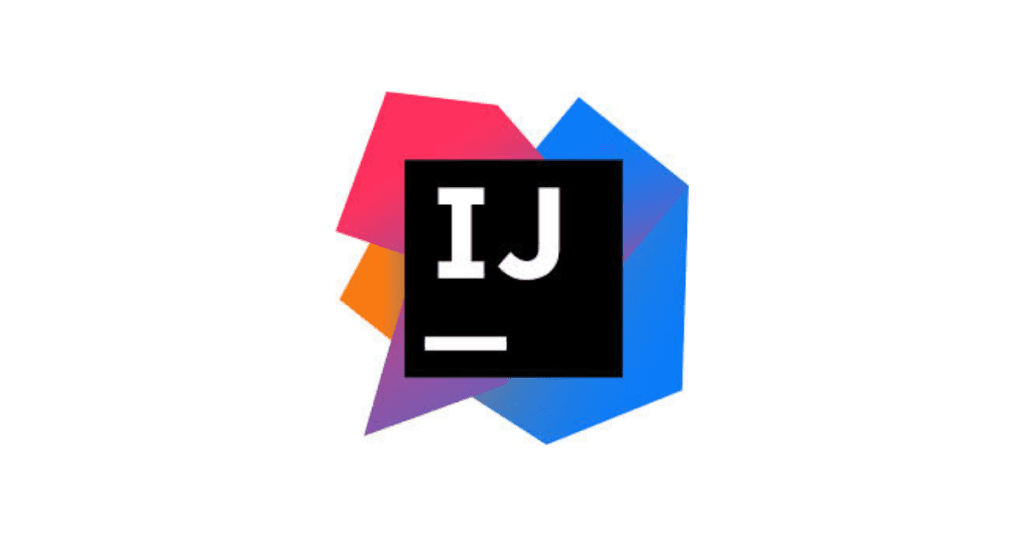Top Java IDEs Compared: Find the Best Fit for Your Workflow
Industry Trends & Innovation
Read Time: 15 mins

It makes all the difference between a frustrating and seamless development process. With so many available options, finding the perfect fit sometimes sounds like an overwhelming task. This all-engulfing guide dives into the best Java IDEs at your disposal, underlining their standout features, strengths, and important considerations.
Knowing these factors will help you pay attention to the tool best suited for your ideal project requirements and coding style, setting you up for success and really pushing your Java development journey through the roof.
 While any text editor can handle code writing, Integrated Development Environments (IDEs) offer so much more. They go beyond mere text editing by providing a unified interface for essential developer tools, streamlining the entire software development process.
With an IDE, developers can dive into programming new applications right away without the hassle of manually integrating and configuring various software. This means they can focus on mastering a single application instead of juggling multiple tools, making their workflow smoother and more efficient.
While any text editor can handle code writing, Integrated Development Environments (IDEs) offer so much more. They go beyond mere text editing by providing a unified interface for essential developer tools, streamlining the entire software development process.
With an IDE, developers can dive into programming new applications right away without the hassle of manually integrating and configuring various software. This means they can focus on mastering a single application instead of juggling multiple tools, making their workflow smoother and more efficient.
 Launched in January 2001, IntelliJ IDEA was a trailblazer among Java IDEs, introducing advanced code navigation and integrated refactoring functions. Besides its robust support for Java and numerous Java frameworks, IntelliJ IDEA also caters to other JVM-based languages like Kotlin.
What sets IntelliJ IDEA apart is its superior optimization and stability compared to other IDEs, along with a vast array of plugins and seamless settings synchronization. These advantages make it an indispensable tool for developers seeking efficiency and reliability in their coding endeavors.
Launched in January 2001, IntelliJ IDEA was a trailblazer among Java IDEs, introducing advanced code navigation and integrated refactoring functions. Besides its robust support for Java and numerous Java frameworks, IntelliJ IDEA also caters to other JVM-based languages like Kotlin.
What sets IntelliJ IDEA apart is its superior optimization and stability compared to other IDEs, along with a vast array of plugins and seamless settings synchronization. These advantages make it an indispensable tool for developers seeking efficiency and reliability in their coding endeavors.
 Primarily designed for Java programming, the Eclipse Development Kit (SDK) is a robust tool. Yet, its functionality doesn’t stop there. Users can broaden its horizons by installing various plugins for different programming languages, and they can even create and share their own plug-in modules.
Eclipse comes in two flavors: a desktop version and a cloud-based version known as Eclipse Che, which allows developers to craft applications directly through a web browser. This flexibility has earned Eclipse a solid reputation, often placing it in direct comparison with IntelliJ. Many Java developers regard these two as the premier Java IDEs, each with its own loyal following and unique strengths.
Primarily designed for Java programming, the Eclipse Development Kit (SDK) is a robust tool. Yet, its functionality doesn’t stop there. Users can broaden its horizons by installing various plugins for different programming languages, and they can even create and share their own plug-in modules.
Eclipse comes in two flavors: a desktop version and a cloud-based version known as Eclipse Che, which allows developers to craft applications directly through a web browser. This flexibility has earned Eclipse a solid reputation, often placing it in direct comparison with IntelliJ. Many Java developers regard these two as the premier Java IDEs, each with its own loyal following and unique strengths.
 Originally released in 1996 by students from the University of Prague, NetBeans is now under open Apache 2.0 license. The package includes a comprehensive set of tools for the development of web, enterprise, desktop, and mobile applications in Java.
NetBeans excels in its modular approach, allowing developers to build applications from a collection of reusable software components called modules. Notably, NetBeans was the first IDE to support the latest versions of JDK, Java EE, and JavaFX, cementing its status as a cutting-edge tool for Java development.
Originally released in 1996 by students from the University of Prague, NetBeans is now under open Apache 2.0 license. The package includes a comprehensive set of tools for the development of web, enterprise, desktop, and mobile applications in Java.
NetBeans excels in its modular approach, allowing developers to build applications from a collection of reusable software components called modules. Notably, NetBeans was the first IDE to support the latest versions of JDK, Java EE, and JavaFX, cementing its status as a cutting-edge tool for Java development.
 The development of BlueJ began in 1999 by Michael Kölling and John Rosenberg, serving as the successor to the Blue system. In March 2009, BlueJ transitioned to open-source status, becoming free software under the GPL-2.0 license. Today, it stands as a popular choice among Java IDEs.
BlueJ's design is tailored to facilitate the learning of object-oriented programming, setting it apart from other development environments. The main screen visually represents the class structure of the application being developed, resembling a UML diagram. Developers can execute commands on objects, inspect object values, and pass them as parameters using the BlueJ framework.
The ease of interaction with various code elements, coupled with a clean and simple interface, makes BlueJ an excellent choice for novice programmers.
The development of BlueJ began in 1999 by Michael Kölling and John Rosenberg, serving as the successor to the Blue system. In March 2009, BlueJ transitioned to open-source status, becoming free software under the GPL-2.0 license. Today, it stands as a popular choice among Java IDEs.
BlueJ's design is tailored to facilitate the learning of object-oriented programming, setting it apart from other development environments. The main screen visually represents the class structure of the application being developed, resembling a UML diagram. Developers can execute commands on objects, inspect object values, and pass them as parameters using the BlueJ framework.
The ease of interaction with various code elements, coupled with a clean and simple interface, makes BlueJ an excellent choice for novice programmers.
Introduction to Java IDEs
An IDE puts all the development tools into a single, easy-to-use system, allowing an integrated development environment to be somewhat of a one-stop shop for building applications. A basic IDE includes a Java code editor with tools automating compilation and a debugger though modern-day IDEs really offer so much more. One of the greatest perks of using an integrated programming environment is the significant reduction in time spent configuring multiple development tools. Instead of juggling various software, everything you need is wrapped up in one cohesive and transparent user interface. This makes it easier for programmers, even those new to certain functionalities, to get up to speed quickly. Furthermore, modern IDEs have incorporated useful features to make writing comments easier. This definitely enables quicker and more effective production of project documentation, which affects productivity and clarity. An IDE that is more tuned for Java may work better for certain projects over an IDE that is tuned towards C++.What is an IDE?
An Integrated Development Environment (IDE) is like a toolkit for software developers, designed to make the coding process more efficient and enjoyable. By bundling together essential features such as code editing, building, testing, and packaging, an IDE significantly boosts developer productivity. Just as writers rely on text editors and accountants swear by spreadsheets, software developers depend on IDEs to streamline their work and enhance their coding prowess.Importance of IDEs in Java Development
 While any text editor can handle code writing, Integrated Development Environments (IDEs) offer so much more. They go beyond mere text editing by providing a unified interface for essential developer tools, streamlining the entire software development process.
With an IDE, developers can dive into programming new applications right away without the hassle of manually integrating and configuring various software. This means they can focus on mastering a single application instead of juggling multiple tools, making their workflow smoother and more efficient.
While any text editor can handle code writing, Integrated Development Environments (IDEs) offer so much more. They go beyond mere text editing by providing a unified interface for essential developer tools, streamlining the entire software development process.
With an IDE, developers can dive into programming new applications right away without the hassle of manually integrating and configuring various software. This means they can focus on mastering a single application instead of juggling multiple tools, making their workflow smoother and more efficient.
Evolution of Java IDEs
Java stands out as one of the most adaptable programming languages globally, finding its way into a myriad of platforms, technologies, and economic sectors. It's the backbone of billions of Android phones, the engine behind numerous games, and a staple in enterprise-level server applications. The demand for skilled Java developers is skyrocketing, driven by emerging trends like AI, Big Data, and Blockchain, which heavily rely on Java's capabilities. With its extensive library ecosystem, Java excels at managing large datasets and executing complex computations, making it an ideal choice for Big Data applications. Additionally, Java's compatibility with AI frameworks such as TensorFlow and Deeplearning4j enhances its appeal for AI projects. Java is also poised to make a significant impact in the Blockchain domain. As decentralized finance (DeFi) technology rises and the need for scalable blockchain solutions grows, Java is expected to play a pivotal role in this innovative sphere.Popular Java IDEs
When it comes to writing in Java, so many options are available with several IDE's serve different needs or tastes. Each IDE brings along its features and capabilities to the table. In this section, we will go through some of the most popular Java IDEs developers have at their disposal for creating scalable and resource-efficient applications for a much smoother coding experience.IntelliJ IDEA
IntelliJ IDEA has earned its reputation as a top-tier Java IDE, widely embraced by development companies across the globe. Packed with powerful tools and features, it significantly enhances the developer's workflow. Launched in January 2001, IntelliJ IDEA was a trailblazer among Java IDEs, introducing advanced code navigation and integrated refactoring functions. Besides its robust support for Java and numerous Java frameworks, IntelliJ IDEA also caters to other JVM-based languages like Kotlin.
What sets IntelliJ IDEA apart is its superior optimization and stability compared to other IDEs, along with a vast array of plugins and seamless settings synchronization. These advantages make it an indispensable tool for developers seeking efficiency and reliability in their coding endeavors.
Launched in January 2001, IntelliJ IDEA was a trailblazer among Java IDEs, introducing advanced code navigation and integrated refactoring functions. Besides its robust support for Java and numerous Java frameworks, IntelliJ IDEA also caters to other JVM-based languages like Kotlin.
What sets IntelliJ IDEA apart is its superior optimization and stability compared to other IDEs, along with a vast array of plugins and seamless settings synchronization. These advantages make it an indispensable tool for developers seeking efficiency and reliability in their coding endeavors.
Features of IntelliJ IDEA
- Sophisticated Debugger
- Code Decompiler
- Language Injection
- Duplicate Detection
- Lightning-fast Search
- Chain Completion
- Instant Code Completion
- Automated Refactoring (streamlining and enhancing the internal code structure)
Pros and Cons of IntelliJ IDEA
Pros:- A wealth of additional features and plugins
- Rock-solid stability
- Excellent technical support
- Automatic generation of boilerplate code
- Intuitive and functional interface
- The Ultimate version comes with a hefty subscription fee
- Consumes a significant amount of computer resources
Eclipse
Eclipse remains a standout choice among Java integrated development environments in 2024, renowned as one of the top free Java IDEs available. It offers a versatile workspace that can be tailored to fit specific needs, thanks to its extensive plug-in system. Interestingly, each version of Eclipse has been named after celestial bodies, like Callisto, Europa, and Ganymede, all moons of Jupiter, adding a touch of cosmic flair. Primarily designed for Java programming, the Eclipse Development Kit (SDK) is a robust tool. Yet, its functionality doesn’t stop there. Users can broaden its horizons by installing various plugins for different programming languages, and they can even create and share their own plug-in modules.
Eclipse comes in two flavors: a desktop version and a cloud-based version known as Eclipse Che, which allows developers to craft applications directly through a web browser. This flexibility has earned Eclipse a solid reputation, often placing it in direct comparison with IntelliJ. Many Java developers regard these two as the premier Java IDEs, each with its own loyal following and unique strengths.
Primarily designed for Java programming, the Eclipse Development Kit (SDK) is a robust tool. Yet, its functionality doesn’t stop there. Users can broaden its horizons by installing various plugins for different programming languages, and they can even create and share their own plug-in modules.
Eclipse comes in two flavors: a desktop version and a cloud-based version known as Eclipse Che, which allows developers to craft applications directly through a web browser. This flexibility has earned Eclipse a solid reputation, often placing it in direct comparison with IntelliJ. Many Java developers regard these two as the premier Java IDEs, each with its own loyal following and unique strengths.
Features of Eclipse
- Core Runtime
- Plugin Development Environment (PDE) for crafting custom plugins
- Language for modeling and control
- Automated syntax checking
- Interfaces tailored for custom solvers
- Customizable Compiler
- User-friendly tools for editing, viewing, and refactoring
Pros and Cons of Eclipse
Pros:- Completely free to use
- Extensive range of plugins that greatly expand its capabilities
- Pre-built code templates ready for use
- Ability to manage projects remotely
- Some developers report that Eclipse can be slower compared to its competitors
- Tends to place a heavy load on the CPU
- Prone to frequent crashes
- Installing and using plugins can be quite complicated
NetBeans
NetBeans IDE is a free, open-source Integrated Development Environment; it is in the top list of the most favored Java IDEs in 2024. It supports most of the operating systems: Windows, Mac, Linux, and Solaris. Originally released in 1996 by students from the University of Prague, NetBeans is now under open Apache 2.0 license. The package includes a comprehensive set of tools for the development of web, enterprise, desktop, and mobile applications in Java.
NetBeans excels in its modular approach, allowing developers to build applications from a collection of reusable software components called modules. Notably, NetBeans was the first IDE to support the latest versions of JDK, Java EE, and JavaFX, cementing its status as a cutting-edge tool for Java development.
Originally released in 1996 by students from the University of Prague, NetBeans is now under open Apache 2.0 license. The package includes a comprehensive set of tools for the development of web, enterprise, desktop, and mobile applications in Java.
NetBeans excels in its modular approach, allowing developers to build applications from a collection of reusable software components called modules. Notably, NetBeans was the first IDE to support the latest versions of JDK, Java EE, and JavaFX, cementing its status as a cutting-edge tool for Java development.
Features of NetBeans
- Features a visual and declarative editor
- Intuitive drag-and-drop editor
- Comprehensive management of the entire application development lifecycle
- Visual HTML5 editor
- Ability to run SQL queries
Pros and Cons of NetBeans
Pros:- JDeveloper streamlines Java software development at every stage of the application lifecycle.
- The platform makes it easy to connect Java programs with databases.
- It seamlessly integrates with the Oracle Application Development Framework (Oracle ADF) ecosystem, simplifying application development through dedicated plugins and tools.
- JDeveloper IDE provides robust tools for creating Java, web, and mobile applications, internet services, and database applications.
- Best of all, the JDeveloper environment is completely free to use.
- It demands a significant amount of RAM.
- The learning curve is steep, requiring considerable time to master.
- Execution can be slow and resource-intensive, making it heavy on system resources.
BlueJ
Originally designed for educational purposes, BlueJ is a free and straightforward Java IDE with an interactive and user-friendly interface. Despite its educational roots, BlueJ has also been adopted for smaller commercial programming projects. The development of BlueJ began in 1999 by Michael Kölling and John Rosenberg, serving as the successor to the Blue system. In March 2009, BlueJ transitioned to open-source status, becoming free software under the GPL-2.0 license. Today, it stands as a popular choice among Java IDEs.
BlueJ's design is tailored to facilitate the learning of object-oriented programming, setting it apart from other development environments. The main screen visually represents the class structure of the application being developed, resembling a UML diagram. Developers can execute commands on objects, inspect object values, and pass them as parameters using the BlueJ framework.
The ease of interaction with various code elements, coupled with a clean and simple interface, makes BlueJ an excellent choice for novice programmers.
The development of BlueJ began in 1999 by Michael Kölling and John Rosenberg, serving as the successor to the Blue system. In March 2009, BlueJ transitioned to open-source status, becoming free software under the GPL-2.0 license. Today, it stands as a popular choice among Java IDEs.
BlueJ's design is tailored to facilitate the learning of object-oriented programming, setting it apart from other development environments. The main screen visually represents the class structure of the application being developed, resembling a UML diagram. Developers can execute commands on objects, inspect object values, and pass them as parameters using the BlueJ framework.
The ease of interaction with various code elements, coupled with a clean and simple interface, makes BlueJ an excellent choice for novice programmers.
Features of BlueJ
- User-friendly interface
- Code Pad for quick testing
- Object Bench for managing instances
- Seamless object interactions
- Comprehensive guides and tutorials
Pros and Cons of BlueJ
Pros:- Easy-to-use graphical interface
- Ability to execute Java expressions directly
- Supports running Java objects at program startup
- Displays UML diagrams of projects
- Usable without installation
- Completely free
- Ideal for beginner programmers
- Compatible with various operating systems, including Linux, macOS, and Windows.
- Limited features compared to other IDEs
- Prone to frequent system crashes
- Not suitable for large and complex projects
